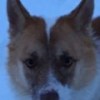First Hubble press release of the year
The COSMOS project is a multi-wavelength survey of a 2 degree field, using, well, basically everything we got.
They have cool results.
More like this
ooohhh
click to embiggen (zoomable)
Fermi gamma ray telescope has released the all sky image.
Some interesting stuff...
assorted bits of stuff from AAS, or that I was reminded of at the meeting


I wonder where the colors come from? The ACS data was a single orbit in F814W. The colors must come from the ground, (which may explain why all of the galaxies seem to have a single color.)
It would be nice if someone could do something scientifically interesting with their dark matter map.
The COSMOS survey is very, very scientifically interesting. It shows large clumps of dark mass in regions of no visible matter. This may indicate that the "voids" seen between galaxies are not empty. This could be a huge amount of mass, enough to cast doubt on counts of "dark" stuff.
"The existence of large clumps of isolated dark matter and visible matter flies in the face of everything we know," says cosmologist Carlos Frenk of the University of Durham, UK.
"There are plausible explanations for small areas of dark matter and visible matter existing in isolation," NATURE continues, "but these theories can't explain the large features visible on the COSMOS map."
Someone predicted this in a paper posted back in '004.
Obviously I need to make myself clearer.
Massey has been discussing this mass map for a few months now. At no point have I heard a discussion of the significance of the detection of the mass with no light associated. In fact, in the paper, the authors argue that it could be a problem with their data, as these measurements are very difficult to do.
Second, there appear to be baryons without any mass. Weak lensing smooths in the plane of the sky with a pretty large kernel. This could easily merge together smaller mass lumps into one average lump at the wrong place. So, I am suspicious of results low mass overdensities. Clusters, such as the bullet cluster, are much easier as the signal is an order of magnitude stronger.
Of course, I could be overly critical. Letters to Nature are very frustrating in this regard as it is nearly impossible to explain enough about the data, even with the Supplemental materials.